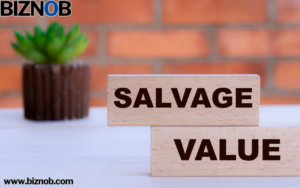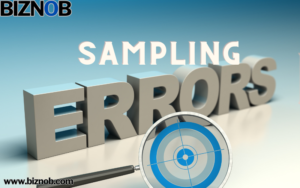What do SaaS sales mean?
When you sell and give away cloud-based software programs every month, this is called software as a Service (SaaS) sales. Customers don’t buy software licenses outright in this model. Instead, they pay monthly to view and use the software online. SaaS sales have become very popular in the past few years because they are cost-effective, scalable, and easy to set up.
Marketing the software to people who might buy it, letting them try it out for free to see how it works, and then turning those possible customers into paying subscribers are the steps that are usually taken to sell SaaS. Customer satisfaction and retention are essential for the long-term success of SaaS businesses, so sales teams focus on giving excellent customer service. As part of SaaS sales, people always try to upsell and cross-sell new features or modules to current customers to get them to use the service more and bring in more money.
To make SaaS sales, you need to know what the customer wants and be able to explain the software’s benefits clearly. In the SaaS business, salespeople need to know a lot about the technical side of the software and be able to show potential clients how it can solve specific problems and make things easier.
Digital marketing, content creation, and online demos are all common ways for SaaS salespeople to get new customers and show off what their software can do. Also, because SaaS products are usually viewed through web browsers or unique apps, analytics and user data are crucial for improving the sales strategy and the software to meet customer needs. Mastering the art of SaaS sales is becoming increasingly important for software businesses that want to do well in the competitive digital world as the need for cloud-based solutions grows.
Like words
- Sales of subscriptions to software as a service
- Business-to-business SaaS sales
- How is selling SaaS different from other types of sales?
Because of its unique features and business strategy, SaaS selling is very different from other types of sales. It’s different from other types of sales in these important ways:
Models based on subscriptions
One big difference in selling SaaS is that the price is based on subscriptions. Instead of selling a one-time product that costs a lot up front, SaaS sales involve monthly or yearly contracts that bring in money repeatedly. This changes how sales are done in a big way; now, the focus is on building long-term connections with customers instead of making one-time sales. SaaS sales teams need to stress the software’s ongoing worth and benefits to keep customers and keep them from leaving.
The approach focused on the customer.
When selling SaaS, knowing what customers want and giving them precisely what they need is essential. Salespeople must listen to prospects and be able to show how the software can solve specific problems because SaaS products are often adjustable and are constantly being updated. For SaaS sales to go well, you must build trust and show you know what you’re talking about. Customers want long-term partnerships with companies that can meet their changing needs.
Digital marketing and being present online
Compared to traditional sales, SaaS selling relies heavily on digital marketing to find and interest potential buyers. Search engine optimization, social media, and content marketing bring in leads. Also, giving away free trials or “freemium” software versions is a popular way to sell SaaS. This lets potential customers see how useful the product is before they decide to subscribe. So, SaaS sales teams need to know how to keep leads interested through online means and use data analytics to figure out how customers behave.
Focus on Making Customers Happy
SaaS companies put a lot of emphasis on user satisfaction and business success. Ensuring customers get the results they want from the software is essential for keeping their subscriptions and getting good word-of-mouth recommendations. Customer success teams and SaaS sales reps often work together to keep an eye on how customers use the software and quickly fix any problems. Focusing on the customer’s success changes the sales process from a one-time deal to an ongoing relationship-building activity.
Making decisions based on data
Data analytics are a big part of SaaS sales because they help sellers improve their tactics and determine how customers act. Key performance indicators (KPIs) like churn rates, conversion rates, and customer acquisition prices help sales teams determine the best way to do their jobs. This way of making decisions based on data allows for continuous growth. It helps sales operations leaders figure out how to improve their company’s sales processes so they get better results.
How to Sell SaaS
There are several steps in the SaaS sales cycle, from finding possible customers to closing deals and giving ongoing customer support. The exact steps may be different for each company and product, but these are the steps that are usually taken in SaaS sales:
- Prospecting and generating leads: The first step is to find people interested in the SaaS service. This means getting leads through different methods, like social media, email campaigns, inbound marketing, and going to events in your business. The goal is to get people interested in the SaaS offering and bring them in.
- Qualifying Leads: The next step after getting leads is to ensure they are good leads. Sales reps look at the leads to see if they fit the SaaS product well based on their wants, budget, and decision-making ability. This helps you sort leads into groups and focus on the most promising ones.
- Discovery and Needs Analysis: This is the part where the sales team talks to approved leads to discover their problems, challenges, and needs. They learn how the SaaS solution can add value by having in-depth discovery conversations, which helps them change their approach correctly.
- Product Demonstration and Trial: The sales team shows the features and benefits of the SaaS product to prospects through personalized product demos. This is done after they know exactly what the prospects need. Offering a free trial lets potential customers see how the software works for themselves, which is another way to ensure it fits their needs.
- In the sales process, it’s normal for prospects to have worries or objections. Here’s how to deal with them and negotiate: Salespeople need to know how to deal with these issues and clear up any doubts that might arise from purchasing. At this time, you may also negotiate prices, contract terms, or changes to the product.
- Close the deal: The sales team goes on to the next step when the prospect is happy with the value and terms of the product. Finalizing the contract, getting the necessary approvals, and walking the buyer through the buying process are all parts of this.
- Onboarding and Implementation: The customer is on the SaaS platform after the deal. The training process helps people start the software, set up accounts, and learn how it works. An easy onboarding process is essential for keeping customers happy and preventing them from leaving.
- Customer Success and Support: After the sale, SaaS companies focus on customer success and support to ensure the customer gets what they want from the software. This constant relationship-building means always being there to help, solve problems, and offer support so that the customer can get the most out of the product and their experience.
- Renewals and Upsells: The sales team works to get renewals as the subscription ends. They show off the value provided during the subscription period and any improvements made to the product. Additionally, salespeople may find upsell opportunities to provide extra features or modules that match the changing wants of the customer.
- Referral and Advocacy: Happy SaaS customers often tell others about the product and leave good reviews. The sales team could use these champions to find new leads and get more regular customers.
These steps will help SaaS sales teams guide prospects through the sales process and build lasting relationships with customers, which will help the SaaS business grow and be successful.
How to Sell SaaS
There are different ways that SaaS businesses package and sell their software products. Each customer has different needs and wants that these types meet. These are a few of the different ways that SaaS can be sold:
Model Based on Subscriptions
Subscription-based sales are the most popular way to sell SaaS. Customers pay a fee monthly, three months, or twelve months to view and use the software. This plan gives the SaaS provider a steady stream of income and predictability. It usually has different price levels with different amounts of features and customer service to fit the needs and budgets of all customers.
Model of Freemium
With the freemium approach, the SaaS product comes with a basic version that users can use for free, with only a few features. We aim to get many people to use the service and pay for a better plan to access more tools and services. The freemium strategy is an excellent way to get new customers and keep old ones returning.
Model Based on Usage
Users are charged based on how much they use the SaaS product in the usage-based approach. Metrics like the number of active users, the amount of data saved, or the number of transactions processed could be used to decide this. It gives customers changing wants options and can help businesses whose users’ habits change often.
Different Price Levels
When you use tiered pricing, you offer different price levels with different benefits and functions. Different levels have different prices, so customers can choose the best plan that fits their needs and budget. Different price levels suit many customers, from people and small businesses to large companies.
Model of a perpetual license
Some businesses offer a perpetual license model, but it’s not very common in the SaaS industry. Customers pay a one-time fee to get a license to use the software for as long as they want. But you might have to pay extra for ongoing help and updates. On-premises software is more likely to have perpetual rights, but some SaaS services offer them.
Model of “Pay as You Go”
You only pay for what you use with the pay-as-you-go model, just like the usage-based approach. On the other hand, pay-as-you-go usually charges you for smaller amounts of use over time. For instance, customers may be charged by the hour or minute for use.
Model for Enterprise Licensing
That’s why the enterprise licensing plan is designed for significant businesses that need a lot of software. It includes negotiating prices and terms of the contract that are tailored to the needs of the business. Enterprise licenses often come with discounts for buying in bulk and dedicated assistance.
Model for Channel Sales
A lot of people may be able to buy from SaaS companies through channel sales. This type of business plan has the software sold by outside sources, like technology partners, resellers, or distributors. Channel partners help the SaaS company and end users get in touch with each other.
These sales models may be used by SaaS companies alone or in combination, depending on the type of software they offer, their target market, and their overall business plan. These flexible models let SaaS providers react to different customer tastes and preferences while ensuring steady revenue growth.
Metrics for SaaS Sales
This is a list of key performance indicators (KPIs) for SaaS sales that help companies see how well their sales efforts work and track their overall success. These measurements give you information about different parts of the sales process and help you find ways to make things better. Here are some critical facts about SaaS sales:
Monthly Recurring Income (MRR): MRR is the total monthly recurring income from active customers. It’s an essential metric for SaaS businesses because it shows the stability and growth of their revenue streams.
Annual Recurring Income (ARR): ARR is the total recurring income you get from active customers every year. This measure shows how the company’s revenue has been doing over an extended period.
Customer Acquisition Cost (CAC): This is the average amount of money it costs to get a new customer. To find it, divide the total cost of sales and marketing by the number of new users gained during a specific period. Lowering CAC is essential for keeping profits high and getting new customers quickly.
Customer Lifetime Value (CLV): This estimates how much money a customer will bring in throughout their entire relationship with a business. It helps figure out how profitable new customers will be in the long run and guides choices about how to keep customers and help them.
Churn Rate: The churn rate shows how many customers cancel their subscriptions during a specific time frame. Keeping customers and making as much money as possible requires minimizing customer turnover.
Growth Revenue: Growth revenue is the extra money you make from current users by upselling, cross-selling, or adding new features or modules to their subscriptions. This shows how well the business can get new customers.
Win Rate: The win rate shows how many leads or opportunities become customers who pay. A sales process that works well has a high win rate.
Sales Conversion Rate: The sales conversion rate tells you how many leads or prospects turn into paying buyers during the sales process. It helps the sales team determine how to improve their efforts to close deals.
Time to Close: This is the average time to turn a lead into a paid customer. Cutting down on the time it takes to close a sale can bring in more money and make sales more efficient overall.
Lead Response Time: The lead response time shows how long it takes for the sales team to answer leads or questions. Responding quickly is essential for keeping prospects interested and boosting conversion rates.
Lead Velocity Rate (LVR): This number tells you how fast the number of approved leads has grown over a specific period. Sales velocity shows how well efforts to get new leads are working and how much possibility there is for future revenue growth.
Sales Qualified Leads (SQL): These are leads that meet specific standards and are thought to be ready for direct sales. Keeping track of the number of SQLs helps you determine how good the leads are and how well the marketing and sales efforts coordinate.
Companies can make choices based on data, improve their sales processes, and grow revenue in the competitive SaaS industry by monitoring and analyzing these sales metrics.
Problems with SaaS Sales
Because software-as-a-service is a different business, selling it has its problems. These problems can make it harder to make sales, and you must use specific methods to solve them. Let’s look at some problems that come up a lot when selling SaaS:
Very long sales cycles
In SaaS, sales processes can be longer than in other fields, especially for complicated solutions or worth a lot of money. It usually involves a lot of people, and customers may need time to carefully consider how well the software fits their needs and how much it’s worth to them.
Strong Competition
The SaaS business is very competitive, with many companies providing the same services. To stand out from competitors, sales teams must find good ways to describe what makes their product unique and what it can do for customers.
Making Prospects Smarter
Because SaaS goods are in the cloud and can be accessed over the internet, prospects may need to be taught about the pros and cons of this model. Sales teams need to know how to deal with everyday worries and misunderstandings.
How to Deal with Concerns and Objections
Prospects may have concerns about data protection, integration, or the ability to make changes. Salespeople need to know how to deal with objections and give clear, believable answers to ease people’s worries.
Resistance to Subscription Pricing
Some potential customers might not want to pay a one-time fee instead of a membership fee. The sales team should stress the benefits of the subscription plan, like regular updates and customer service.
A difficult sales process
Talking about complicated and technical things is typical for selling SaaS goods, especially to business customers. To successfully show how valuable the software is, salespeople need to know its features and functions.
Problems with Integration
Potential customers might not want to buy new software if it doesn’t work well with their existing systems. Sales teams must discuss integration issues and offer ways to make the change go smoothly.
Not Much Money at First
When starting, SaaS sales may bring in less money than one-time program sales. This can make managing cash flow and resources hard, so you must focus on keeping customers and offering more to them.
Dealing with Changes in the Market
As technology improves and customer needs change, the SaaS market changes quickly. Sales teams need to know what’s going on in the market and be able to change their sales methods quickly to fit those changes quickly.
Getting new customers and keeping old ones at the same time
Getting new customers is essential, but keeping old customers is even more critical for recurring income. Sales teams must balance getting new customers and keeping old ones happy.
Keeping track of free trial conversions
Free trials are a popular way to sell SaaS, but turning trial users into paying customers can be challenging. During the trial period, sales teams must take care of trial users, show them how useful the software is, and give them great support.
To deal with these problems, you need to focus on the customer, know the worth of the SaaS product inside and out, and be able to change with the market’s needs.
Tips for Making SaaS Sales Go Well
To sell SaaS successfully, you must be innovative and focus on the customer. Here are some best practices that will help you make SaaS sales more effective and bring in more money:
Understand What the Customer Wants: Spend some time getting to know the wants and problems of possible customers. Have in-depth discovery conversations with the customer to discover how your SaaS product can help them with specific problems and give them value.
Customize Your Sales Approach: Make sure your sales approach is unique for each client by considering their needs. Don’t use a one-size-fits-all method; instead, show how your SaaS product fits with the prospect’s business goals.
Focus on Value Proposition: Make sure people understand what makes your SaaS offering special. Instead of focusing on its features, think about what it can do for you, like making things more efficient, saving you money, and making them work better.
Offer Free Trials or Freemium Versions: Let potential customers try out your SaaS product by offering free trials or freemium versions. This lets them test how well the software works and see if it fits their needs before investing.
Build Trust and Credibility: Show prospects you know what you’re talking about by sharing success stories and examples from happy customers. This will help them trust you. To gain customers’ trust, you need to be honest and trustworthy.
Provide Great Customer Service: Make sure your customer service team quickly responds and knows what they’re discussing. Taking care of customer problems and questions quickly builds trust and makes customers happier.
Align Sales and Marketing Efforts: Get your sales and marketing teams to work together more. Ensuring marketing campaigns effectively create leads and give sales reps the tools and information they need to support their work is essential.
Use Data Analytics: To learn more about the sales process, how customers behave, and how they use your products, use data analytics. Making data-based decisions can help you develop better sales strategies and more personalized customer contacts.
Focus on Customer Success: Make long-term relationships and customer success more important than short-term gains. Customers pleased with your SaaS product are likelier to repeat their subscriptions and tell others about it.
Opportunities to Upsell and Cross-Sell: Look for ways to offer extra features or modules to customers who have already bought from you. Show them relevant products that meet their changing wants and explain how these improvements can help their business even more.
Continuous Training for the Sales Team: Companies should give their sales staff ongoing training to keep them updated on the newest products, market trends, and sales strategies. Giving sales reps helpful information makes it easier for them to connect with prospects meaningfully.
Monitor and Improve Sales Metrics: Businesses should monitor and study important sales metrics daily, like customer acquisition cost, churn rate, conversion rate, and customer lifetime value, to find ways to boost their sales and make their strategies more effective.
In the competitive SaaS market, these best practices can help SaaS businesses improve customer satisfaction, streamline their sales process, and grow in a way that lasts.
The technology used for sales in SaaS
Different tools are used in SaaS sales to improve the sales process, get customers more involved, and make things run more smoothly. The following are examples of tools and apps that are often used:
Software for Customer Relationship Management (CRM): CRM software is essential to track and organize customer information, contacts, and sales leads. It helps sales teams keep track of leads, see what messages they’ve sent and received, and make follow-up tasks easier.
When you use sales automation tools, things like lead generation, email campaigns, and job reminders that you do repeatedly in the sales process are done automatically. These tools save time for sales reps to work on more critical tasks.
Email Marketing Software: You need marketing platforms to send targeted emails, keep users interested, and nurture leads. They often work with CRM tools to make sure that communication goes smoothly.
Videoconferencing and Webinar Software: Virtual meetings and product demos can be made easier with videoconferencing and webinar software, which lets sales reps connect with prospects and customers from afar.
Sales Engagement Platforms: These are platforms that bring together different sales tools, like email tracking, call analytics, and social media integrations, to give you a complete picture of your contacts with customers and let you reach out to them in a more personal way.
Tools for Data Analytics and Business Intelligence: Platforms for data analytics and sales intelligence help sales teams look at how customers behave, keep track of sales performance, keep an eye on the sales pipeline, and learn more so they can make choices based on data.
Software for Lead Generation and Prospecting: Lead generation tools help you find new customers by collecting more data, keeping track of website visitors, and monitoring social media. These tools help you find leads and make sure they are good ones.
Software for Working Together on Documents and Electronic Signatures: Sales teams can work on bids, contracts, and other documents with the help of collaboration platforms.ESignature software makes it easier to sign contracts and deals.
Sales Enablement Platforms: These platforms combine all your sales materials, training materials, and product details in one place. They ensure it’s easy for sales reps to get the tools they need to engage prospects successfully.
Configure Price Quote (CPQ) Software: CPQ software makes SaaS sales processes more efficient and effective. It gives sales teams the power to set up complicated SaaS solutions that are exactly what each customer needs. This makes sure that everything is correct and eliminates mistakes. With CPQ, sales reps can quickly and accurately make quotes and proposals, making the buying process smooth and easy for customers and prospects. This speeds up the sales cycle and increases total revenue.
These tools help SaaS sales teams automate tasks, connect with prospects better, and learn helpful information that helps them make more sales and give customers a better experience.

























































